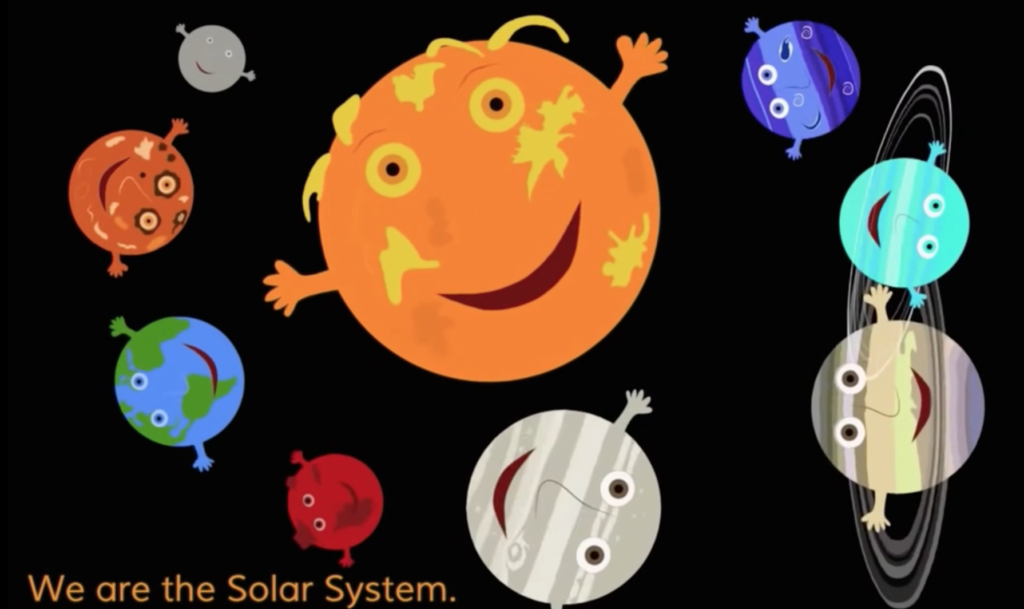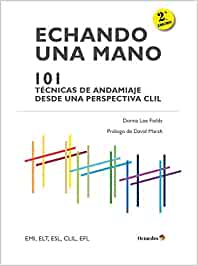You caught a beauty!!!
Download PDF of scaffold here.
theory behind scaffold…
The International Day of Human Space Flight (Yuri’s Night), celebrated on April 12th of every year, honours Russian cosmonaut Yuri Gagarin who, in 1961, when he orbited the Earth for two hours, became the first human to go into space.
Forty years later, in 2001, the United Nations voted to celebrate Yuri’s Night, which promotes public interest in space exploration and encourages young people to consider professions associated with space exploration and research. The day also aims to promote aspirations to explore and maintain outer space for peaceful purposes.
Let’s help students to consider the original motives behind space exploration – controlling direction and purpose of what is possible in space in the future. How important is that goal and is inner exploration more meaningful?
step by step…
- Use template.
- Add images for all information.
- Put the descriptions of each planet found on the first page of the template on the floor of the classroom, hidden behind objects, hung on the wall.
- Print out a table for each pair of student (page 2 of template) and hand them out to students.
- Students work in pairs or groups of three doing the following:
- Write the description of the planet they feel is appropriate. a 1-2 sentence justification. In the column next to it, give give an alternative description (Example: This description is justified because of the word ‘rings. Jupiter has many rings./This description is justified because of the word ‘mountain’. This planet looks like it has mountains.’)
- Write a 1-2 sentence justification. (Example: This description is justified because of the word ‘rings. Jupiter has many rings./This description is justified because of the word ‘mountain’. This planet looks like it has mountains.’) In this way, students are writing each description at least twice, thus internalising it more profoundly.
- Find the names of past space missions and/or astronauts and give your team that name. In the last column, explain why you are inspired by that mission or astronaut.

5. Play the video.
6. Students make changes if necessary to the descriptions they’ve chosen for each planet while and after they watch the video.
- Formative Evaluation/Reflection: In groups, students answer the following questions based on the Question Continuum.

- Do we explore space?
- Which planet is closest to the Sun? Which is farthest?
- Who do you know who is most likely to become an astronaut or work on a space project?
- When was the first time a human was sent to space?
- Where can you go to see all the planets?
- What does ‘exploration’ mean? What is ‘space exploration’?
- How easy is it to live on another planet? Explain.
- Why do we need to know about other planets? Why do we need to know details about Earth?
- What if you had the opportunity to visit another planet. Which one would you choose, who would you want to go with, and why would you choose that planet?
find more scaffolds here…
more videos…
Stephen Hawkins: Big Ideas Made Simple


Scaffoldingmagic.com is your entryway into DYNAMIC bilingual learning methodologies, such as Phenomenon-Based Learning, CLIL, EMI, and ESL. You’ll find ways to implement critical thinking tools (DOK) to promote higher level thinking, the growth mindset, instill an ethic of excellence, deep reflection on learning, and all through multi-cultural, interdisciplinary activities. We have the keys to turning competences into action and to creating collective efficacy in your school so you move ahead as a unified, enthusiastic team.






Pingback: Scaffolding Space and Space Exploration (Primary) - Scaffolding Magic